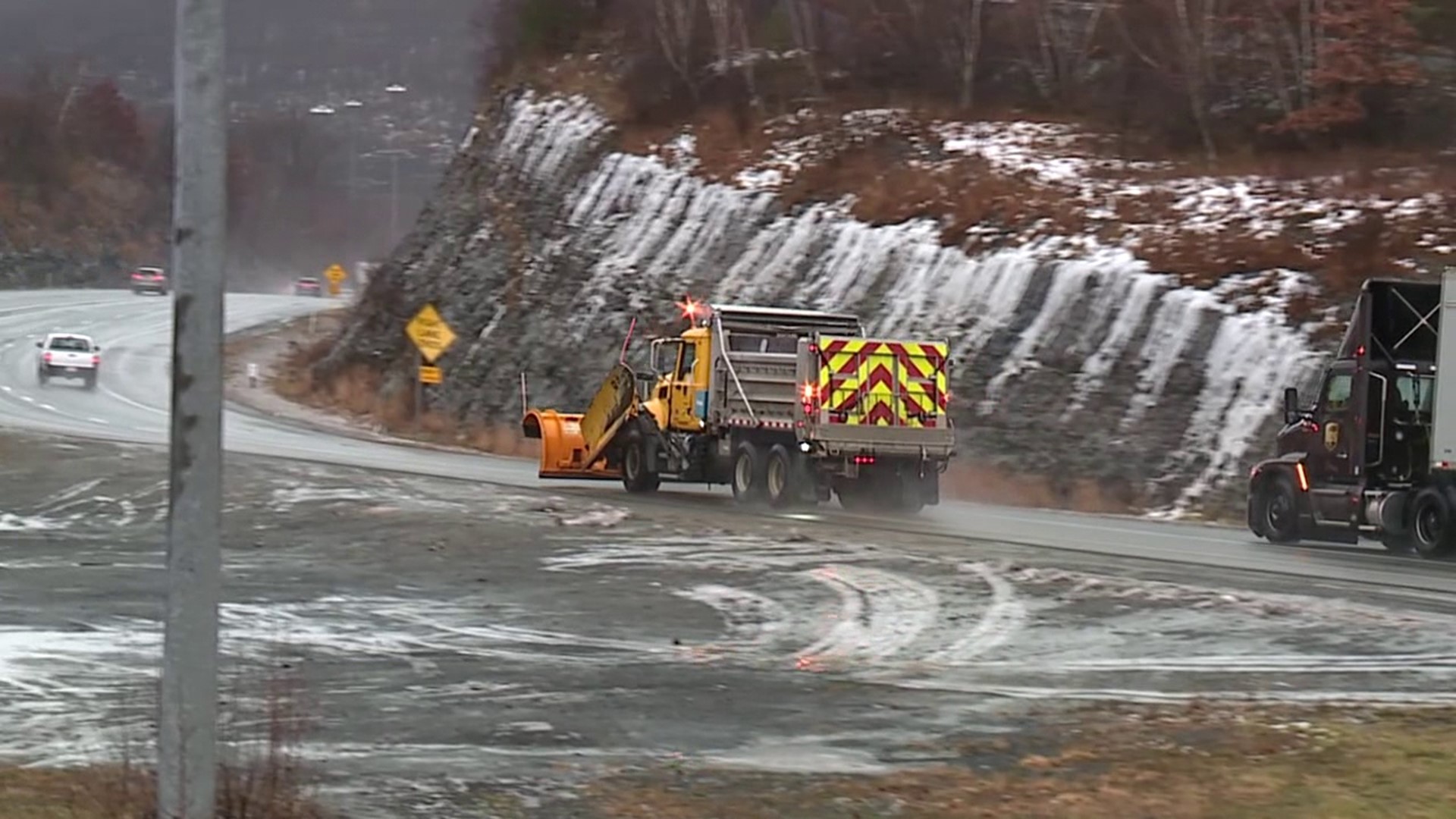PENNSYLVANIA, USA — The weather, conditions and maintenance of our roads go hand in hand no matter the season. Even when the weather is calm, that plays a role in the work that is getting done on our roads and bridges.
In a typical winter, PennDOT road crews use 100,000 tons of salt covering the six counties in northeastern Pennsylvania. So far this winter, they've used a little more than 20,000 tons. But even when there is no snow or ice in the forecast, there is other work to get done this time of year.
"Clearing signs, removing vegetation, trees, whatever may come into the motorists' way, just doing a lot of vegetation removal," said Maintenance Services Engineer Loni Shalkowski, PennDOT District 4.
Here in Pennsylvania, the winter season of course also means pothole season. Potholes are created as a direct result of the weather, and the moisture on the ground that freezes causing it to expand.
"So our crews are also performing pothole patching, we'll do this throughout the winter. As you know, we have a very demanding freeze-thaw cycle so we will patch the roads as much as necessary," said Shalkowski.
We have seen that demanding freeze-thaw cycle just this week. The low temperature Monday morning was 7 degrees in the backyard. Friday afternoon, we'll likely be in the 50s. In a few weeks, we'll take a closer look at just how much of an impact that has on our roads and bridges.
"There is a science to winter. Our salt brine is specifically made to be 23.3 percent salt brine, and that is very specific because it needs to operate at lower temperatures," said Assistant District Executive for Maintenance Jonathan Eboli, PennDOT District 4.
Next week, we're going to the salt shed in Pike County to see how salt brine and anti-skid are made and used—and how much the weather plays a role in it.
"So we need to make sure we're mixing the proper amount of salt with water when we're making that salt brine for it to be effective. Salt does become less effective below 25 degrees when the road is below 25 degrees," Eboli said.
In the warmer months, of course, the focus will shift to spring and summertime road projects. Then, we'll take a look at long-term roadwork plans, scheduled closures and detours.
Find out how you can stay safe in wintry weather on WNEP's YouTube channel.

